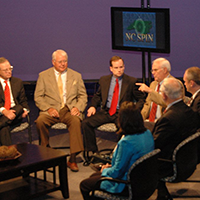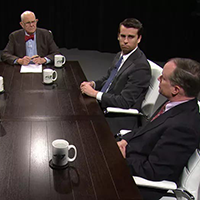Why my college cut its tuition by half
Published October 7, 2015
by Sharon Latchaw Hirsh, President, Rosemont College, published in Charlotte Observer, October 6, 2015.
The topic of college affordability has been in the spotlight recently, and with good reason. The price of college has increased 45 percent over the last decade, at the same time that household income has dropped by 7 percent. One of the fundamental problems confronting colleges and families is a tuition-pricing model that no longer works.
Last month, Rosemont College in suburban Philadelphia announced that it will reduce its tuition by 43 percent next year. In making that decision, Rosemont joined a small group of colleges across the nation that have reset their tuition in recent years.
This current college tuition model is badly broken and serves no one well.
At the core of the issue is this little-understood fact: The tuition that colleges publish is nothing more than an artificial sticker price that most students do not pay. Instead, colleges offer students discounts in the form of grants and scholarships that bring the sticker price down.
The average cost of tuition at a private, four-year college is now $31,320, according to a recent study by the National Association of College and University Business Officers. But the average discount from that published price is a whopping 48 percent. And nearly 90 percent of first-year college students pay a discounted tuition price.
Tuition continues to rise at most colleges, not just because of inflation, but in order to cover increasingly high discounts. Discounts are used to attract students to attend a particular college. And, with the exception of endorsed scholarships, none of it involves real money.
The tuition sticker price keeps climbing – but primarily in order to allow colleges to increase the discounts they can offer to coveted students.
The result is an ever-escalating and eventually unsustainable cycle.
After several years of research and soul-searching, Rosemont decided that we will no longer play this game.
Instead, going forward, we will publish our true cost of tuition. We ran multiple financial scenarios until we found the tuition price that removed us from the game.
We expect that more colleges will follow in Rosemont’s footsteps. While the decision to move to a true-tuition model may not be the right one for every school, we hope that it is one that stimulates conversation on other campuses and around family dinner tables across the nation.
Sharon Latchaw Hirsh is president of Rosemont College in Rosemont, Pa.
October 7, 2015 at 9:57 am
Richard L Bunce says:
Good move on the revenue side... now get the expenses under control including a focus on education not social engineering. It would also help if K-12 education systems produced students ready for college... but that's another issue.







